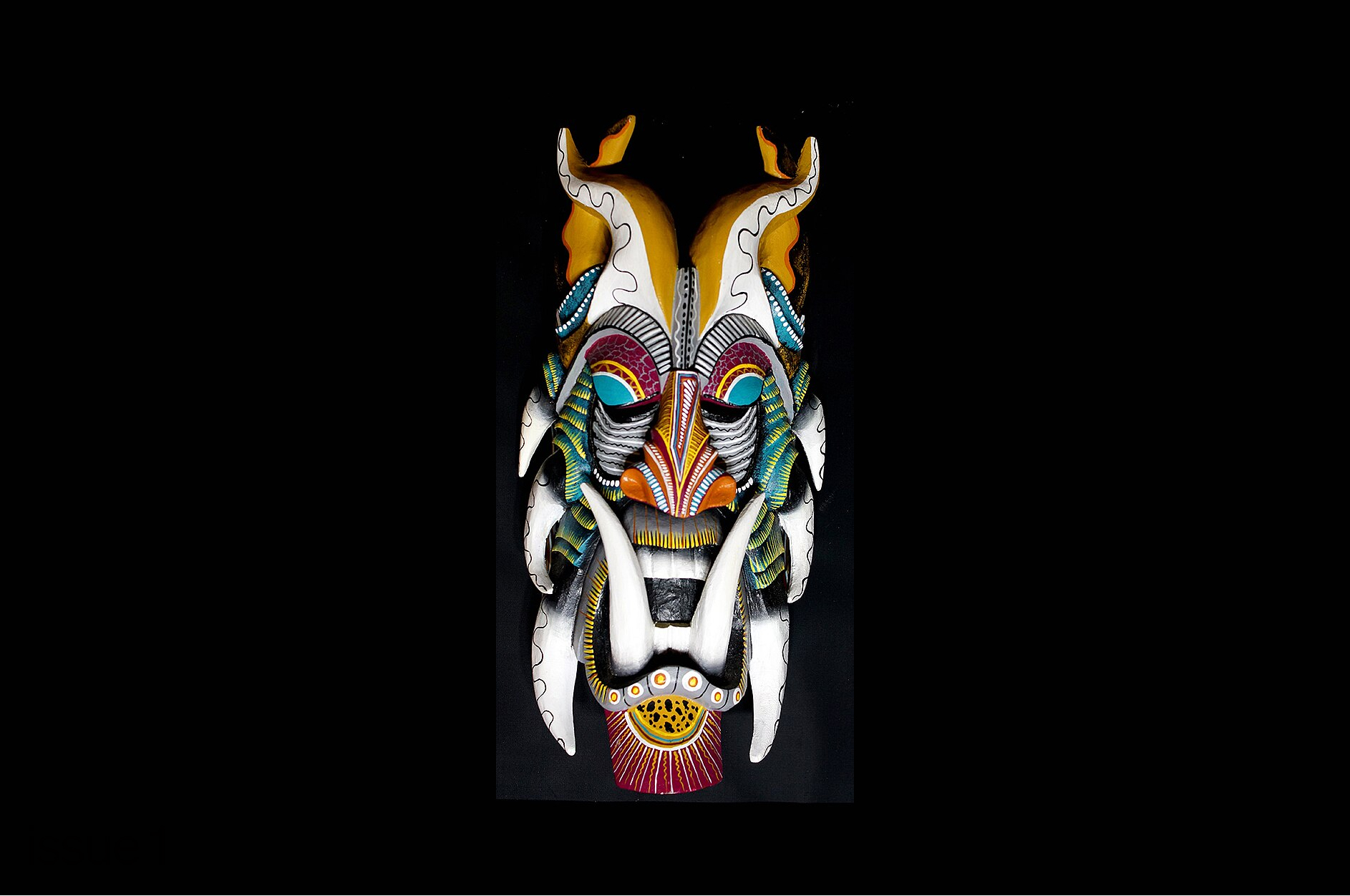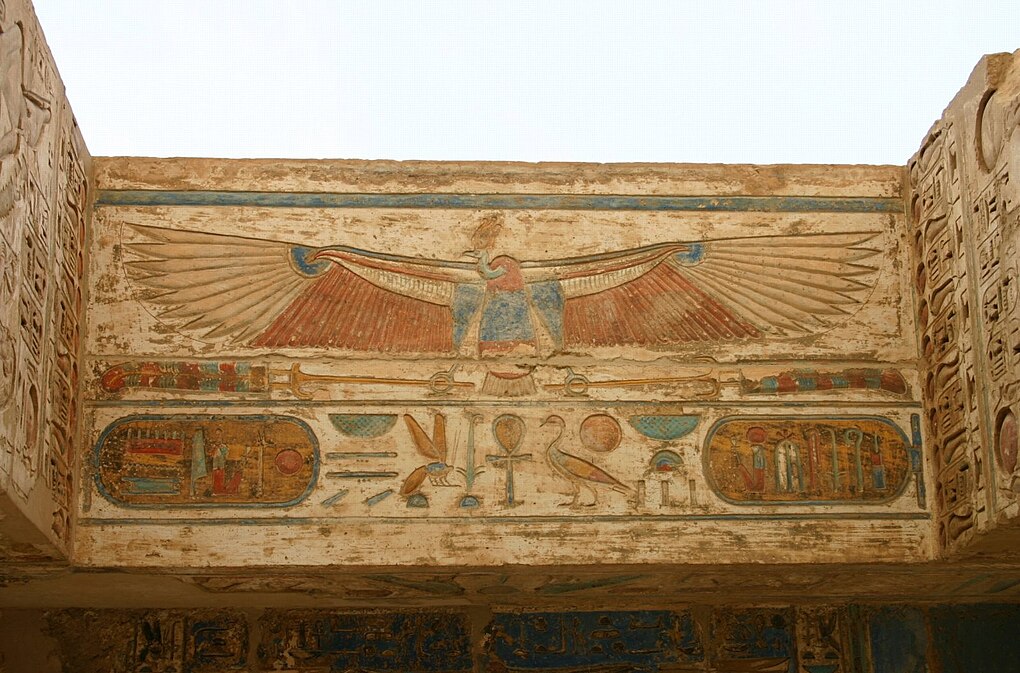A Unified History of Brand vs Marketing vs Design

From the first human marks to AI integration: how meaning, persuasion, and beauty evolved across cultures and millenia
"We need to work on our brand!" means something different in 2025 than it did five years ago, five centuries ago, or five millennia. But the fundamental human drives behind this statement remain constant: a deep-seated need to communicate identity, persuade others, and create beauty that's as old as humanity itself.
The relationship between what we now call brand, marketing, and design stretches back to our species' first attempts to make meaning through marks, to signal belonging through symbols, and to influence others through persuasive communication. It’s a history that reveals the integration we're seeking today isn't innovation but rather a return to how humans naturally communicated before industrialization separated these functions.

The Beginning: First Marks and Meaning (40,000+ Years Ago)
The Birth of Visual Communication
The story begins in caves across the world—Lascaux in France, Altamira in Spain, Aboriginal rock art in Australia—where our ancestors first understood that marks could carry meaning beyond the moment of their making. These weren't decorations; they were humanity's first attempts at what we now recognize as brand identity, marketing communication, and systematic design.
Cave paintings served multiple functions that mirror modern brand thinking:
- Identity markers: "We were here" (territorial branding)
- Skill demonstration: "We can hunt these animals" (capability marketing)
- Ritual significance: Sacred spaces with consistent visual languages (brand experience)
- Knowledge transfer: Teaching through visual storytelling (content marketing)
Indigenous Integration: Where All Three Were One
Long before Western industrial thinking separated brand, marketing, and design into distinct disciplines, indigenous cultures worldwide understood them as inseparable parts of human communication and community building.
Costa Rican Indigenous Wisdom
The indigenous peoples of Costa Rica—including the Boruca, Chorotega, Bribri, and Cabécar—developed sophisticated systems that integrated what we now call brand identity, marketing strategy, and design excellence:

Boruca Mask Traditions: The elaborate masks created for the Dance of the Little Devils weren't just artistic expressions—they were comprehensive brand systems. Each mask design carried specific meaning (positioning), was created for particular ceremonial purposes (marketing objectives), and followed established aesthetic principles (design systems). The consistency of style across generations created recognizable "brand identity" while individual variations allowed creative expression within systematic constraints.
Chorotega Pottery: The distinctive ceramic work functioned as both functional design and cultural communication. The patterns, colors, and forms carried information about the creator's community, the pot's intended use, and spiritual significance. This was integrated design thinking—where aesthetic beauty, functional performance, and meaningful communication were inseparable.
Bribri Cosmological Architecture: The traditional conical houses (usure) embodied their understanding of the universe in their very structure. The eight-sided base represented the eight levels of the cosmos, while the conical roof pointed toward the spiritual realm. This architecture was simultaneously brand identity (distinctly Bribri), marketing communication (demonstrating spiritual knowledge), and sophisticated design (optimized for climate and materials).
Textile Storytelling: Across Costa Rican indigenous communities, textiles carried complex narratives through color, pattern, and technique. These weren't decorative—they were information systems that communicated family lineage, spiritual beliefs, and cultural values. Each textile was a brand artifact that reinforced community identity while serving practical purposes.
Global Indigenous Parallels
This integration appeared independently across cultures worldwide:
African Adinkra Symbols (Ghana): Over 400 symbols that communicate specific concepts, values, and stories. Each symbol functions as logo, message, and design element simultaneously. Adinkra cloth isn't just decorated fabric—it's a communication system where every symbol carries strategic meaning.
Native American Totems (Pacific Northwest): Totem poles integrated family history (brand story), social hierarchy (positioning), and artistic excellence (design execution) in single monuments. Each element—colors, animals, positioning—carried specific meaning within a shared visual language.
Australian Aboriginal Dreamtime Art: Perhaps the world's oldest continuous artistic tradition, where sacred symbols carry creation stories, territorial boundaries, and spiritual teachings. These paintings function as maps, histories, and identity markers simultaneously.

Eastern vs Western Design Philosophy: Two Approaches to Integration
Eastern Integration: Harmony and Wholeness
Japanese Aesthetic Principles: The Japanese understanding of design has always been holistic, treating beauty, function, and meaning as inseparable:
The Tea Ceremony (Chanoyu): Perhaps the ultimate integration of brand, marketing, and design. Every element—the room design, object selection, movement patterns, seasonal considerations—works together to create a total experience that communicates cultural values (harmony, respect, purity, tranquility) while serving the functional purpose of preparing and sharing tea. This is systems thinking at its most sophisticated.
Ma (Negative Space): The Japanese concept of ma teaches that what's not there is as important as what is. This principle influences everything from architecture to graphic design, creating breathing room that allows meaning to emerge. Modern minimalist design owes much to this ancient understanding.
Chinese Philosophical Foundations: Feng Shui: The practice of arranging space to optimize energy flow demonstrates sophisticated understanding of how design affects psychology and behavior. This is user experience design informed by thousands of years of observation.
Calligraphy as Total Art: Chinese calligraphy integrates meaning (the characters), beauty (the visual form), and performance (the act of creation). Master calligraphers understand that how something is made is as important as what is made—a principle that influences all Chinese design thinking.
Western Separation: The Industrial Divide
Medieval Integration: Before industrialization, Western culture also understood these disciplines as connected. Medieval guilds combined craft excellence, commercial success, and visual identity. Guild marks were simultaneously logos, quality guarantees, and marketing communications.

Renaissance Artistic Workshops: Leonardo da Vinci's workshop treated art, engineering, and communication as parts of a single practice. The Renaissance ideal of the "complete artist" included what we would now call brand strategy, marketing innovation, and design execution.
The Industrial Break: The Industrial Revolution began the separation that would define Western thinking for centuries. Mass production required specialization, creating distinct roles for brand management, marketing departments, and design services.
This specialization enabled scale but lost the integration that had characterized both Western and Eastern approaches for millennia.

Ancient Civilizations: Early Brand Systems
Egyptian Visual Systems (3100 BCE - 30 BCE)
The ancient Egyptians created perhaps history's most sophisticated early brand system:
Hieroglyphic Communication: A complete visual language that combined symbolic meaning, aesthetic beauty, and functional communication. Each symbol was simultaneously a letter, an idea, and a designed object.
Pharaonic Branding: Egyptian pharaohs understood what we would now call brand identity and positioning. The distinctive crowns, false beards, and ceremonial objects weren't just decorations—they were brand elements that communicated divine authority and cultural continuity across dynasties.
Monumental Marketing: The pyramids and temples functioned as massive marketing communications, designed to inspire awe and demonstrate power to both subjects and enemies. These monuments integrated engineering excellence, aesthetic grandeur, and strategic communication.
Roman Systematic Thinking (753 BCE - 476 CE)
Military Standardization: Roman legions used consistent visual systems—standards, uniforms, formations—that functioned as brand identity, psychological warfare (marketing), and tactical communication (design function).
Commercial Innovation: Romans developed sophisticated approaches to commerce that included early advertising (painted signs), brand consistency (standardized products across the empire), and market segmentation (different approaches for different provinces).

Chinese Imperial Systems (220 BCE - 1912 CE)
Dynastic Visual Languages: Each Chinese dynasty developed distinct aesthetic approaches that communicated their legitimacy and values. The transition from one dynasty to another often included comprehensive rebranding—new colors, symbols, and aesthetic directions.
Porcelain as Brand Export: Chinese porcelain became a global brand that communicated quality, sophistication, and cultural authority. The consistency of design and quality across centuries created one of history's first international luxury brands.
The Modern Era: Separation and Reunion

The Foundation Era (1920s-1960s): Birth of Modern Disciplines
Design Takes Shape (1920s-1940s) Industrial design emerged as companies like General Electric and Ford realized that products needed to be both functional and appealing. The Bauhaus movement (1919-1933) established design principles that still influence today's work: form follows function, systematic thinking, and the integration of art and industry.
Marketing Finds Its Voice (1930s-1950s) Modern marketing emerged from the advertising agencies of Madison Avenue. David Ogilvy established research-based advertising, while Leo Burnett pioneered brand character development. The post-WWII economic boom created consumer culture and mass markets.

Did you know?
Several countries decided that Tony was too persuasive. Chile, Peru, Argentina, and Mexico introduced strict regulations to curb the advertising of sugary products to children. In some of these places, Tony was effectively banned from cereal boxes and TV commercials aimed at kids.
Brand Strategy is Born (1950s-1960s) Corporate identity programs emerged as large companies realized they needed systematic approaches to visual consistency. Walter Landor founded the first brand consultancy in 1941, treating brand as a strategic business asset rather than just a logo.
The Specialization Era (1970s-1990s): Separate and Distinct
As businesses grew more complex, these disciplines became specialized and often siloed. Large advertising agencies dominated marketing. Design agencies focused on corporate identity and packaging. Brand strategy remained primarily within large corporations or specialized consultancies.
Desktop publishing (Adobe Illustrator, 1987) democratized design tools but also fragmented the discipline. Personal computers enabled direct marketing and database-driven campaigns, making marketing more measurable but also more tactical.

The Digital Disruption (2000s-2010s): Forced Integration
The internet changed everything by making brand, marketing, and design inseparable:
The Website Challenge: Creating effective websites required all three disciplines simultaneously. You needed brand strategy to determine what to communicate, marketing insights to understand user journeys, and design expertise to create usable interfaces.
Social Media Acceleration: Platforms like Facebook, Twitter, and Instagram made brand expression constant and interactive. Every post required brand thinking, marketing strategy, and design execution.
The Content Marketing Revolution: As traditional advertising effectiveness declined, companies shifted to content marketing. This required deep integration: brand strategy determined what stories to tell, marketing insights guided distribution and optimization, and design made content engaging and shareable.
The Integration Imperative (2015-2025): Systems Thinking
Digital transformation forced these disciplines to work as integrated systems:
Customer Experience Focus: Companies realized that brand perception was shaped more by cumulative experience than by advertising campaigns. This made integration essential rather than optional.
Data-Driven Brand Building: Digital analytics allowed real-time measurement of brand impact through website behavior, social engagement, and conversion data. This created feedback loops between brand strategy, marketing execution, and design performance.
The Platform Economy: Companies needed to maintain consistent brand presence across dozens of platforms and touchpoints. Design systems emerged as a response to this complexity, creating modular approaches that enabled consistent execution across teams and touchpoints.

Understanding the Disciplines Today
Despite their increasing integration, brand, marketing, and design remain distinct disciplines with different purposes, timescales, and expertise requirements.
What Brand Actually Is
Brand is the strategy that defines who you are, what you stand for, and how you want to be perceived. It encompasses your positioning, purpose, values, personality, and the promises you make to your audience.
Brand operates at the highest level of your business strategy. It influences everything from product development and hiring decisions to partnership choices and market expansion. A strong brand strategy provides the framework for all other communications and experiences.
Timeline: Brand strategy is developed over months and evolves over years. This stability becomes crucial during scaling—when teams grow rapidly and decision-making becomes distributed, strong brand strategy provides the consistent framework that keeps everyone aligned.
What Marketing Actually Does
Marketing is the tactical execution that connects your brand to your audience and drives specific business outcomes. It takes your brand strategy and translates it into campaigns, content, and communications designed to attract, engage, and convert prospects into customers.
Marketing operates in the realm of implementation and optimization. While brand strategy asks "who are we?", marketing asks "how do we reach our audience?" and "what messages will motivate action?"
Timeline: Marketing operates in cycles—campaigns run for weeks or months, content is published regularly, and strategies are adjusted quarterly based on performance data. When marketing operates without strong brand foundation, these cycles become reactive rather than strategic, leading to inconsistent messaging and wasted resources.
What Design Actually Creates
Design is the visual and experiential expression of your brand strategy through marketing materials and touchpoints. It takes abstract brand concepts and makes them tangible through color, typography, imagery, layout, and user experience.
Design operates in the realm of perception and emotion. While brand defines what you want to communicate and marketing determines where and when to communicate it, design decides how it looks, feels, and functions.
Timeline: Design projects can range from days (for individual materials) to months (for comprehensive visual identity systems). Smart organizations invest in design systems early—modular, scalable approaches that maintain consistency while enabling rapid execution as they grow.
How They Work Together in Go-to-Market Strategy
The magic happens when brand, marketing, and design work in sequence and harmony—especially during critical go-to-market moments.
The Proper Sequence
1. Brand Strategy First Before you create any materials or launch any campaigns, you need clarity on your brand foundation. This strategic work informs everything that follows.
Go-to-market impact: Brand strategy directly influences your pricing strategy, target market selection, and competitive positioning. Without this foundation, you're essentially guessing at what price the market will bear and which audiences will respond.
2. Marketing Strategy Second With brand strategy in place, you can develop marketing approaches that authentically represent your brand while driving business results.
Go-to-market impact: Strong brand foundation makes marketing attribution significantly more reliable. When your brand is consistent and memorable, customers can more easily connect touchpoints across their journey, giving you clearer data on what's actually driving conversions.
3. Design Expression Third Only when you know what you want to say (brand) and how you want to say it (marketing) should you decide what it should look like (design).
Go-to-market impact: Design systems become critical during rapid scaling. When you need to launch quickly in new markets or channels, having modular design systems lets you maintain consistency while moving fast.
The Integration Points
Brand informs marketing: Your brand positioning determines your target audience and directly impacts pricing strategy. Your brand values guide your messaging approach and channel selection.
Marketing informs design: Your marketing channels determine design requirements and technical specifications. Your marketing messages influence visual hierarchy and user experience priorities.
Design supports brand: Visual consistency reinforces brand recognition and builds trust over time. Design quality reflects brand values and positioning. User experience delivers on brand promises and creates emotional connection.
The Compounding Effect
When these three disciplines work in harmony, they create a compounding effect that's particularly powerful during product launches and scaling phases.
For early-stage companies: This integration helps you punch above your weight. Clear brand strategy lets you compete on differentiation rather than just features. Consistent marketing builds recognition faster. Smart design systems let you scale visual presence without scaling design costs.
For growth-stage companies: The integration becomes crucial for maintaining coherence as you add team members, enter new markets, and launch additional products. Without proper integration, growth often leads to brand fragmentation and decreased marketing effectiveness.
Common Mistakes and How to Avoid Them
Mistake 1: Starting with Design
The problem: Jumping straight to logo design or website development without brand strategy leads to beautiful materials that don't drive business results.
The solution: Always start with brand strategy. Understand your positioning, define your personality, and clarify your promises before creating any visual materials.
Mistake 2: Treating Brand as Marketing
The problem: Approaching brand as a series of marketing campaigns creates tactical solutions to strategic problems and results in inconsistent messaging.
The solution: Develop comprehensive brand strategy before launching marketing efforts. Use brand as the foundation that makes all marketing more effective.
Mistake 3: Confusing Marketing with Brand
The problem: Measuring brand success using only marketing metrics misses the broader impact of brand on business operations, culture, and long-term value creation.
The solution: Track brand metrics separately from marketing metrics. Measure brand consistency, recognition, and preference alongside marketing conversion and engagement rates.
Mistake 4: Designing Without Systems Thinking
The problem: Creating visual identity without considering scalability results in designs that work for initial materials but break down as you grow, launch new products, or enter new markets.
The solution: Invest in design systems early. Think modularly about how visual elements will work across different contexts, channels, and future needs.
Mistake 5: Ignoring the Revenue Impact
The problem: Treating these disciplines as separate cost centers rather than integrated revenue drivers leads to suboptimal resource allocation and missed growth opportunities.
The solution: Measure the integrated impact of brand, marketing, and design on business outcomes. Track how brand consistency affects conversion rates, how design systems impact marketing efficiency, and how strategic positioning influences pricing power.
The Brave Brand Approach: Why Sequence and Experience Matter
At Chamber, we've seen what happens when organizations get this sequence right—and when they don't. Having worked with companies at every stage from early-stage startups to unicorn-scale businesses, we've learned that the difference between success and struggle often comes down to how well these three disciplines are integrated.
The advisory foundation: Before diving into brand strategy, the most successful engagements begin with strategic partnership and advisory work. This helps us understand not just what you want to communicate, but how brand decisions fit into your broader business strategy, competitive landscape, and growth plans.
The strategic sequence: Brand strategy always comes before visual identity. This isn't just best practice—it's the difference between design that drives business results and design that simply looks good.
The systems advantage: Our approach to identity and systems thinking is rooted in scaling experience. Design systems aren't just about visual consistency—they're about enabling your team to move fast without breaking your brand.
The digital integration: Digital and experience design becomes the proving ground where brand strategy meets market reality. This is where we see whether your positioning actually resonates, whether your visual identity actually converts, and whether your brand promises are actually deliverable.
This integrated approach—moving from advisory through strategy, systems, and digital experience—ensures that every investment builds on the previous one rather than working at cross-purposes.
Making It Work for Your Organization
For Early-Stage Companies
Start with brand fundamentals before investing heavily in marketing or design. A clear brand foundation will make every subsequent investment more effective and help you avoid costly rebranding as you grow.
Critical focus: Establish brand strategy that can scale with you. Make decisions about positioning and personality that will remain relevant as you add products, enter new markets, and grow your team.
For Growth-Stage Companies
Audit the alignment between your brand strategy, marketing approach, and design expression. Look for disconnects and inconsistencies that might be confusing your audience or diluting your impact.
Critical focus: Systematize what's been working intuitively. As you scale, the informal brand decisions that worked when you were smaller need to become documented systems that new team members can follow.
For Established Companies
Use brand strategy as the lens for evaluating all marketing and design decisions. When these three disciplines are properly aligned, they compound each other's effectiveness rather than working at cross-purposes.
Critical focus: Assess whether your brand foundation can support your next phase of growth. Sometimes companies outgrow their positioning or their visual identity systems weren't built for the complexity they now manage.

The Next Evolution (2025-2035)
Understanding this complete history—from separate crafts through forced integration to strategic orchestration—reveals patterns that help predict what's coming next.
The AI Integration Reality
Brand strategy is becoming more important, not less, as AI tools democratize content creation and design execution. This mirrors the desktop publishing revolution of the 1980s—when tools became accessible, strategic thinking became the differentiator.
Marketing is experiencing rapid automation in execution while requiring deeper strategic thinking in planning. AI can optimize ad spend and personalize content, but strategic positioning and message hierarchy remain human domains.
Design is evolving into two distinct tracks: systematic thinking and creative direction. AI excels at executing within defined parameters, making design systems more valuable than ever.
The Integration Imperative
Looking at the complete trajectory—from separate crafts through specialization, forced collaboration, and strategic orchestration—the next phase appears to be seamless integration:
- Cross-functional collaboration becoming the norm rather than the exception
- Shared measurement systems that track integrated impact rather than departmental metrics
- Unified planning cycles that treat brand evolution, marketing campaigns, and design system updates as parts of a single strategic process
The Strategic Advantage of Getting It Right
Organizations that understand the distinctions between brand, marketing, and design—and how they work together strategically—have a significant competitive advantage.
When you get the sequence right, everything becomes easier and more effective:
Your marketing attribution becomes more reliable because customers can connect touchpoints across a consistent brand experience.
Your pricing strategy has strategic foundation because your brand positioning gives you rational justification for premium pricing and clear differentiation from competitors.
Your scaling efforts compound rather than fragment because design systems and brand guidelines enable consistent execution even as teams grow and decision-making becomes distributed.
Your product launches have built-in advantages because every touchpoint reinforces the same strategic positioning, creating coherent market presence that breaks through noise.

Coming Full Circle: From Cave Walls to AI Integration
Standing in a cave in Lascaux today, surrounded by 40,000-year-old paintings, you witness humanity's first attempt at what we now struggle to reintegrate: meaning, beauty, and communication working as one. Those ancient artists didn't separate strategy from design from marketing because they understood something we've spent centuries forgetting—that human communication is naturally integrated.
The Boruca mask maker didn't hand off the spiritual meaning to a "brand strategist," then pass aesthetic decisions to a "designer," then give promotional planning to a "marketer." The mask was conceived, created, and used as a complete communication system. The Japanese tea master doesn't separate the room design from the ritual meaning from the guest experience. The entire ceremony is one integrated practice.
What we call "innovation" in 2025—AI-human collaboration, systematic design thinking, authentic brand building—would be familiar to our ancestors. They used different tools, but they understood the same fundamental truth: that the most powerful human communication happens when all elements work in harmony.
The Renaissance masters knew this. Indigenous communities have always known this. Eastern philosophies have preserved this. We're not pioneering integration, we're remembering it.
The future belongs to a new type of professional: the modern universalist. Someone who can think strategically like a Bribri architect, create systematically like a Japanese tea master, and communicate authentically like a cave painter, amplified by AI tools that previous generations could never imagine. These aren't specialists who collaborate; they're complete practitioners who integrate.
The cave painters left their marks knowing they would outlast empires. They created meaning that transcends time because they understood that real value in communication isn't about perfect execution in separate disciplines—it's about human connection that endures. That tells a story.
In boardrooms and studios around the world, people are rediscovering what those first artists knew: that the most powerful work happens when meaning, beauty, and strategy become one. The tools change. The platforms evolve. The fundamental human drive to connect, communicate, and create remains constant.
The future of brand, marketing, and design isn't about better integration; it's remembering that they were never meant to be separate in the first place.
We're not building something new. We're coming home.
